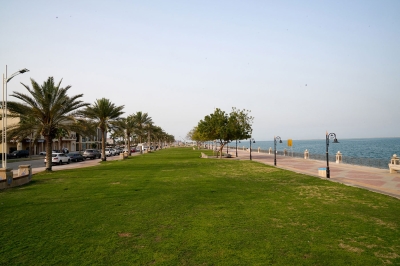

The Red Sea Plains, known as the 'Tihama plains', are plains overlooking the Red Sea, located between the Western Highlands to the east and the Red Sea coast to the west. They extend from the northwest to the southwest of the Kingdom of Saudi Arabia, along the Red Sea.
The geological impacts on Tihama plains
Tihama Plain varies between narrow and wide due to the geological factors directly affecting it. In the north, specifically in the Gulf of Aqaba, the basement rocks overlook the sea directly, with the exception of the area surrounding the city of Haql.
The coastal plain widens from Ras al-Sheikh Humaid to the center of al-Muwaylih, belonging to Duba Governorate in Tabuk Province, extending for several km. Then, the basement rocks overlook the sea again for a long distance, starting from the north of Duba Governorate to the north of al-Wajh Governorate, except for the open basin of Wadi Azlam towards the sea. The coastal plain begins to widen gradually south of al-Wajh Governorate, reaching its maximum width of forty km at the city of Jazan in the southwest of the Kingdom, and the continuity of the plain is interrupted between Jazan and al-Wajh in the south.
Valleys in the plains of the Red Sea
The bedrock protrudes and advances towards the sea in the governorate of Ummlujj and north of Yanbu governorate. In addition to the volcanic lava fields that separate Tihama al-Sham and Tihama Aseer, the coastal plain intersects with a number of valleys descending from the mountains adjacent to the Red Sea.
The width of the valley basins varies between the north and the south. Some of the valleys located to the north of Jeddah enjoy a wide drainage basin, such as Wadi as-Sir, Wadi al-Hamd, and Wadi al-Azlam. However, the scarcity of rainfall in this part of the coast has given the valley basins a different characteristic, and it is rare for the floods of these valleys to reach their estuaries.
In the south, the valleys descend from the Sarawat Mountains, which are distinguished by their high altitude and known for their abundance of rain. They flow for a few months annually after the rain falls. It is known that some valleys have developed their own drainage basins as a result of the height of the mountains and the abundance of rain.
The northern and southern sections of the Red Sea plains
The appearance is similar in both the northern and southern sections of the Red Sea plains, where they are dominated by surfaces covered with thin gravelly layers that transition into coastal sabkhas and lagoons near the coast, and alluvial fans or debris cones towards the east, near the valley exits from the mountain ranges.
There are fields of sand dunes, and the northern section is distinguished by the diversity of its landforms, which include Pleistocene alluvial fans, as well as widespread and distinct marine and river terraces. These fans belong to different stages of the Quaternary period.
Tihama and the coastal plain are linked by marshes, coves, structures, and coral reefs, which are forms that are essentially linked to the current coastline of the Red Sea, in addition to marine and river terraces.
Related quizzes
Related articles


